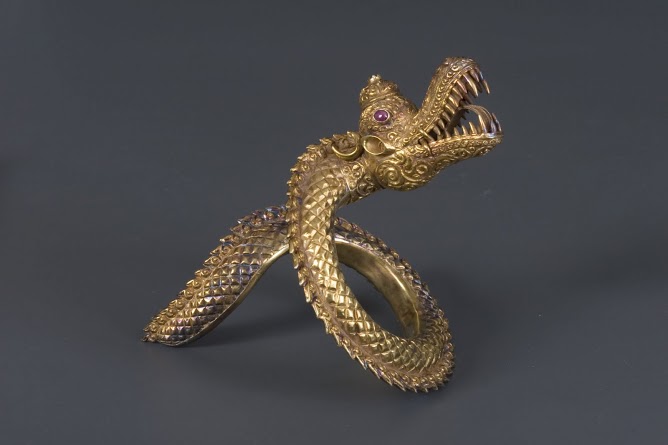Artefact inspections
The methods of natural science play an important role within the work of our Institute, both with regard to the study, identification and description of the objects in the Zelnik Collection and the archaeological field work and the associated surveys and tests.
Metal composition tests
We conduct a great deal of laboratory analysis to determine the material composition of the objects in the Collection. At present, we are studying the objects in the Burmese collection, which is not currently exhibited. The X-ray fluorescence (XRF) testing of metal objects provides information about the composition of the alloys used, which allows us to detect incidentally occuring modern alloying additives. Cobalt and Cadmium, for instance, are telltale ingredients; the latter is used to lower the melting point in modern processes. The tests which have a great importance in the valorisation process of the collection have detected no modern alloying additives so far. The metal composition tests are conducted by the Hungarian Precious Metal Testing and Authentication Authority.

Instrumental testing of objects and identification of gems
The microscopic examination of objects primarily yields information about the methods of manufacture. The thorough inspection of the Burmese collection has attested a highly developed metalworking craftsmanship. This is no surprise if we take into account that in Burma, alchemy had developed into a veriteble cult by the 5th century, and, despite religious disapproval, it is still practised today. In addition to the methods of producing metal plates and joining them together to form objects, microscopy also reveals the types of ornamentation and the techniques used in making them, while in the case of cast objects, the quality and technique of the casting can be established using this type of analysis. Through the discovery of the tell-tale details of manufacturing techniques, the tests provide decisive information about the authenticity of the objects as well.
The precious metal jewellery and other objects in the Zelnik Collection are often adorned by gems, and precious stones have also been used on their own to make cut and carved beads of various shapes and colours since prehistoric times. Glass, which was a rarity at the time, was also a popular material that was used diverse ways in the jewelry making of Southeast Asian cultures, often on par with precious stones. Even in the earliest times, glass was imported to the region from Arikamedu in Southern India.
The examination and identification of gems is therefore of prime importance for the description of the objects in the collection. At present, the gems in the Burmese collection are being identified. In Burma, the working of precious stones reached an almost unbelievably high level as early as the Iron Age Samon Valley Culture (from around 300 BCE). The materials used for the etching, colouring and patterning of gems indicate a sophisticated knowledge of materials. Polariscopy and refractometry, accompanied by microscopic photography, provide plentiful information about all these methods.
At the institute, the instrumental tests of objects and the identification of gems is performed by Dr. József Takács, master jeweller, precious metal expert, geologist and Chairman of the Hungarian Society of Precious Metal Workers, formerly a professor at the Budapest University of Technology.